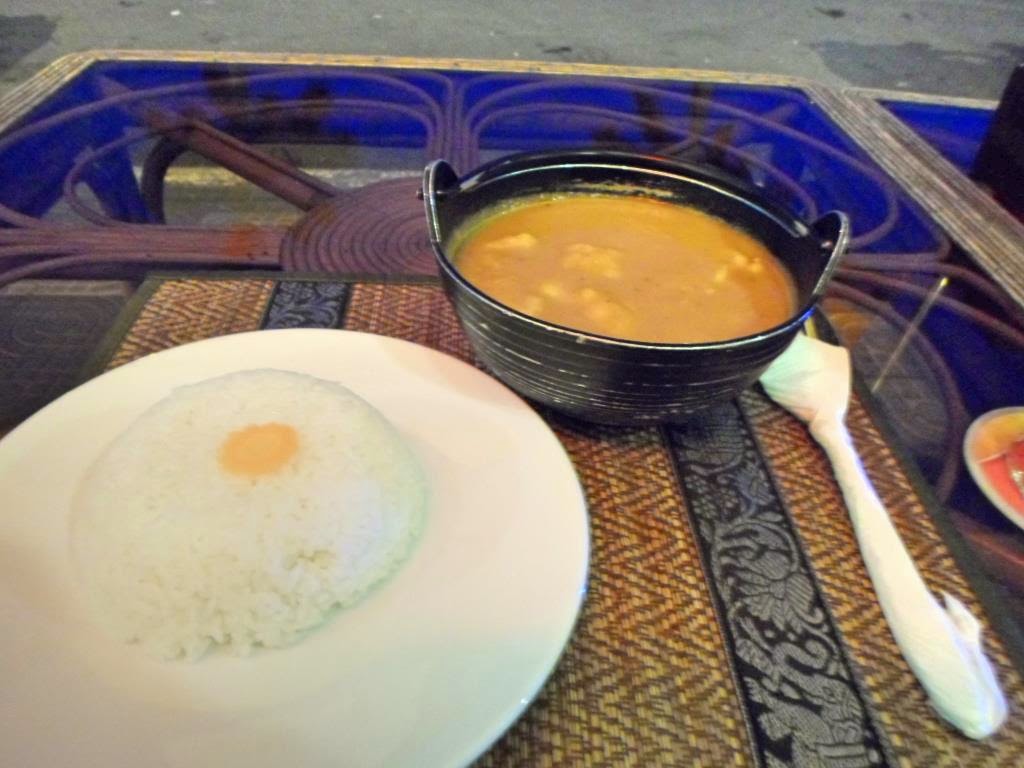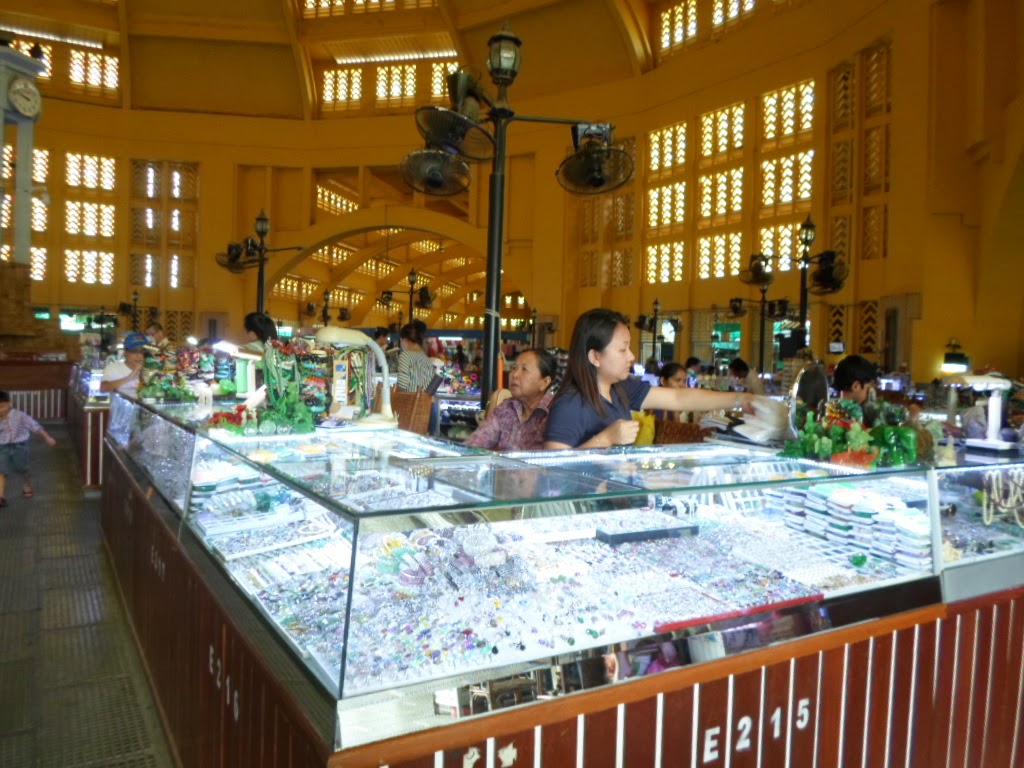When I was younger and less worldly-wise, I would rely a lot on travel books like The Lonely Planet, Fodor's, and DK to take me places and help me navigate my foreign environments. The real reason behind this reliance, I realized, was that I was a total control freak and wanted to plan every single detail about my journey out of fear and insecurity. Traveling to strange lands and cultures can be overwhelming and scary!
These days, however, I have developed a more relaxed attitude towards life and adventure. It's okay if I miss out on some things or I don't know where I'll be or what I'll be doing the next day. Everything that is meant to be, will be is my new philosophy in life. So, I have veered away from travel books and hard-core planning and have, instead, sought out real time information and advice from locals and mobile technology. Going with the flow means talking to locals and soliciting guidance for where to visit, what to see/do/eat, and how to get there. If local information is not readily available, then online I go. So far, this easy-going attitude has played out rather well for me last year in Europe and currently in Asia.
As many locals in Phnom Penh are shy, soft-spoken, and speak limited English, local information is hard to come by. Thus, mobile technology has been a tremendous lifesaver for me in the Kingdom. Below are 7 reasons why:
1. Instead of wandering aimlessly (this steamy weather is so not made for it), I can go online to see what restaurants/cafes or places of interest are nearby. Thanks to Google, listings are easily available and accessible online. (So, no thank you, EU, for your anti-trust suit against Google. I'm a happy Google user.)
2. Next, I read the social media reviews of a place of interest and decide if it's worth a trip (compare this to the review of the one guidebook writer).
3. Then, I launch the map app and check out the possible routes to get there - whether on foot or with a vehicle. Navigation couldn't be easier - no big and inconvenient paper maps and compass! Further, by enabling my location on the app, I can track my position on Google map and see if I'm on or off track - a super helpful feature in places where street signs are non-existent.
4. The same app also tells me the distance between my current location and the place I am planning to visit. I can use that information to negotiate the ride price with tuk-tuk drivers. For example, a tuk-tuk driver wanted to charge me US$5 for a 3.3 km ride - I said no, showed him the map on my phone, and said I would only pay US$3.50 and nothing more (as it's about US$1 for a km). He agreed without further argument. Knowing the distance gives me the confidence to negotiate. I no longer need to waste good energy playing the bargaining game and I can keep my peace.
5. Online information is free. (How much does a new and relevant guide book cost these days? There's also no need to hire a local tour guide because hey, you can read up on a place's history, etc. online!) The cost for a mobile data plan in Phnom Penh is very affordable (my 4 GB data plan cost just US$5 a month). The return far, far, far outweighs the (minimal) cost.
6. Travel light! A phone weighs less than a guide book.
7. With the multitude of apps available these days (most are free), the phone is as versatile as a Swiss army knife (if not better). For instance, it can double as a LED flashlight for those dark places (yes, there's an app for it). In another instance, the Google translator app can help me communicate in situations where the locals speak little to no English. It's not perfect but the app has helped me to order vegetarian dishes at restaurants, buy fruit from stall owners at the market, and ask if a drink has alcohol or not.
So there you have it, my new way of solo travel - local and mobile guidance. Seek and you shall find, ask and you shall receive.
So there you have it, my new way of solo travel - local and mobile guidance. Seek and you shall find, ask and you shall receive.
Here are some photos from the past few days:
Above left: Lunch at The Vegetarian (US$6.50); Above right: The simple and quiet beauty of these frangipanis stopped me on my tracks and re-centered me amidst the hustle and bustle of the city
Above: Phnom Penh Riverside (along Preah Sisowath Quay)
Above left: Dinner at Anjali (aloo gobi and lime juice; US$5.50) on the Riverside; Above right: Phnom Penh Night Market
Above left: Straw mats in lieu of tables and chairs at the Night Market; Above right: Royal D - just add water for an orange-flavored electrolyte drink (US$0.25/pack)
Above: A cool and breezy night stroll along the Riverside
Above left: A dedication to King Sihamoni's 10th year anniversary of his coronation (facing the Tonle Sap River in front of the Royal Palace); Above right: Central Market (a.k.a. Phsar Thom Thmei)
Above left: An ice seller at the Central Market; Above right: Khmer porridge and iced lemon tea at Feel Good Cafe (US$4.25)
Above right: Entry into St. Joseph Church for Sunday Mass
Above left: Interesting how Khmer culture is integrated into the Catholic religion - seen here, a large censer is placed in front of a statue of Mary and child for people to offer incense (note: Catholics do not worship idols so this prayer form is rather unusual and endemic to Cambodia); a colonial structure inside the compound of St. Joseph Church
Above: Children playing outside during a Khmer Mass at St. Joseph Church
Above: A Khmer Mass at St. Joseph Church
Above left: A little girl playing with someone's pair of heels (during a Khmer Mass at St. Joseph Church); Above right: A Khmer catechism class at St. Joseph Church
Above left: 10 AM English Mass at St. Joseph Church; Above right: Snack time (egg, cheese, and vegetables sandwich and passion fruit-banana-yogurt-honey shake) at Cafe Soleil (US$4.25)
Above: K'nyay Khmer & Vegan (@ Terrace 95)
Above: Dinner at K'nyay Khmer & Vegan (fresh spring rolls, iced lime tea, and chocolate orange ice cream; US$5.50) ~ this chocolate orange ice cream was THE best I've had to date (and it cost only US$1.00)















































No comments:
Post a Comment